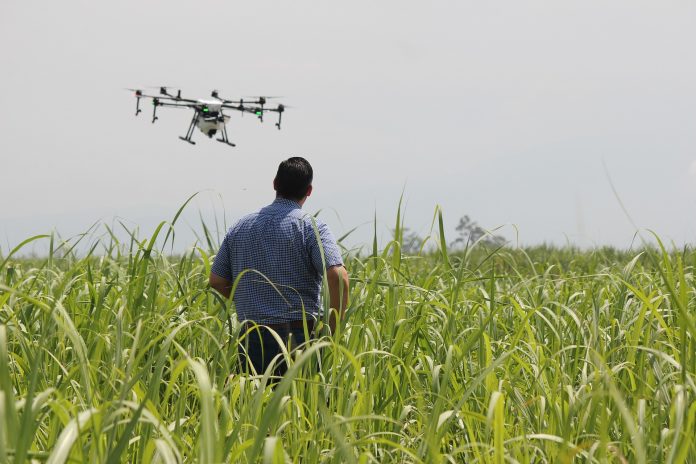On the heels of the 14th season of our annual cover crop fly-on, there’s the familiar sense of satisfaction coupled with the realization that even cover crops will be changing with the times.
This year, our soil and water office coordinated with the pilots at Fisher Ag Services to fly over 3,700 acres of barley, oats and rye on the soybean fields of 22 farmers across Holmes and our neighboring counties.
This is one of the more popular programs we manage during the year, and thanks to the support of the Muskingum Watershed Conservancy District, the trend in our area shows there is yearly growth in the number of farmers willing to implement this simple, yet effective conservation measure.
This makes it even better news for us that advances in technology are bringing new tools to the farms near us: Drones, or UAVs (unmanned aerial vehicles), are no longer the newest technology hitting the scene, but they are quickly finding a foothold in new sectors, including various on-farm applications.
And it couldn’t come at a better time: With farm after farm in our area facing labor difficulties, changing weather patterns and increasingly tighter margins, the addition of an extra “tool” in the toolbox might be what gets an operation through to the next season.
Fly-on
Technology met tradition this summer when two local farmers needed to try a different approach to get their cover crops seeded outside of the usual windows. The first, a Holmes County dairy, knew they wanted to turn steers out on corn fodder, but wanted to interseed the corn to provide better grazing throughout the winter.
The second farm, a former Amish dairy in southern Wayne County, was new to growing soybeans but knew that a cover crop could help with some weed suppression and erosion prevention. He had missed the sign-up period to aerially seed with the crop planes but jumped on the chance to bring a drone operation in and get his cover seeded early for the best growth potential.
Two different companies helped with each fly-on, but the process was similar: Bring bagged seed right to the landing area, and with a staff of two or three people, keep the drone re-filled (about five minutes of flight time would empty the 20-pound hopper) and swap out a battery every other return trip.
Both companies had multiple spare batteries, but recharging on site was necessary; one group was able to use extension cords because we were near a barn, and the other had a small generator and inverter charging the extra batteries from his truck bed in the middle of the field.
Potential

For those committed to cover cropping, the potential of this technology is immense: Fly when weather conditions are right, even if it’s just a few hours at a time, without the logistics and staging required for planes or drills and without having to worry about whether the ground is fit to take equipment across.
Multi-way mixes worked much better out of the drone (which flew about 10 feet above the ground) than they do from an airplane, and we found that there was good seed coverage on the standing corn, which isn’t something we’ve had much luck with in the past.
Small, awkward-shaped fields common around here can be challenging for an airplane to get even coverage, but the drone worked fine in much tighter areas and had no problem avoiding obstacles in or near the fields.
After a short time observing the fly-on, one farmer mentioned several things off the bat that appealed to him. While it wasn’t the fastest option, he was able to schedule the drone on a very short turnaround time, and it only required him to get the seed to the field at the right time.
Flying a 60 pound/acre rate of rye might not have been the most efficient, but we agreed it would be very good for frost-seeding clover on pasture. The unit was relatively unobtrusive, as opposed to the loud planes that can startle horses and livestock.
Thanks to the onboard camera, he could watch the screen of the controller and observe where there were weeds across the 30-acre field to pinpoint his problem areas.
He had sold his milking herd earlier that spring because no one was in line to take over the dairy, but the family wants to keep farming the ground. Watching how simple it was to get this task done, it made it seem possible that even with fewer hands available to keep the farm running, tools like the drone might help keep them, in business.
Future
The benefits for farmers — and especially conservation-minded farmers — are many, which is what is so intriguing to our office about seeing this technology take off.
Taking into consideration the many other ways that drones can be deployed for the benefits of conservation, whether it’s mapping the tree canopy for forest health studies, or invasive species inventory and control on hard-to-reach land (both are being considered for future projects in Holmes County), it’s hard to imagine that our current methods of farming and land management will be the status quo in just a few more years.













